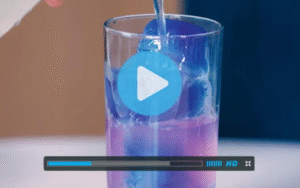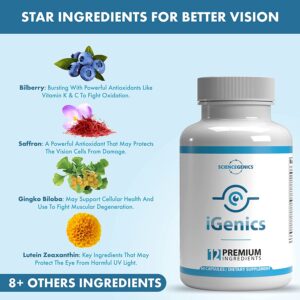An enlarged prostate, also known as benign prostatic hyperplasia (BPH), is a common condition that affects men as they get older. By age 50, about half of men show signs of an enlarged prostate, and by age 80, up to 90% of men may be affected. While BPH is not cancer, it can significantly impact quality of life due to its uncomfortable urinary symptoms—such as frequent urination, weak urine stream, and difficulty emptying the bladder completely.
The good news is that there are several treatment options available today, ranging from lifestyle adjustments and medications to minimally invasive procedures and surgery. Each treatment comes with benefits and drawbacks, and choosing the right option depends on the severity of your symptoms, your age, overall health, and personal preferences.
In this article, we’ll explore the current treatment options for enlarged prostate, breaking down the pros and cons of each so you can make an informed decision when discussing with your doctor.
Why Treating an Enlarged Prostate Matters
BPH may start as a minor inconvenience, but if left untreated, it can lead to complications such as:
- Frequent nighttime urination disrupting sleep
- Bladder infections and urinary tract infections (UTIs)
- Bladder stones
- Kidney damage due to urine retention
- Sudden inability to urinate (urinary retention)
Because of these risks, seeking the right treatment is crucial for maintaining long-term urinary and kidney health.
Treatment Options for Enlarged Prostate
1. Watchful Waiting (Active Surveillance)
For men with mild symptoms that don’t interfere with daily life, doctors may recommend watchful waiting—closely monitoring the condition without immediate treatment.
Pros:
- No side effects from medication or surgery
- Allows men to avoid unnecessary treatments
- Suitable if symptoms are mild and stable
Cons:
- Symptoms may worsen over time
- Risk of sudden urinary retention or complications
- Requires regular follow-ups with your doctor
2. Lifestyle and Home Remedies
Lifestyle adjustments can sometimes improve mild symptoms without medication.
Examples include:
- Reducing caffeine and alcohol intake (both can irritate the bladder)
- Limiting evening fluid intake to reduce nighttime urination
- Bladder training exercises to improve control
- Maintaining a healthy weight and regular physical activity
Pros:
- Safe, non-invasive, and no cost
- Can complement other treatments
- Improves overall health
Cons:
- Usually only effective for mild cases
- Results may be gradual and limited
- Cannot stop disease progression
3. Medications
Medications are one of the most common treatments for BPH. There are several types available:
a. Alpha Blockers (e.g., tamsulosin, doxazosin)
These relax the muscles in the prostate and bladder neck, making urination easier.
- Pros: Works quickly, often within days or weeks; reduces urinary symptoms.
- Cons: May cause dizziness, low blood pressure, or ejaculation problems.
b. 5-Alpha Reductase Inhibitors (e.g., finasteride, dutasteride)
These shrink the prostate by blocking hormones that cause it to grow.
- Pros: Can reduce prostate size and lower the need for surgery.
- Cons: May take months to show results; possible side effects include decreased libido and erectile dysfunction.
c. Combination Therapy
Using both alpha blockers and 5-alpha reductase inhibitors can provide better results for men with severe symptoms.
- Pros: More effective than either medication alone.
- Cons: Increased risk of side effects.
d. Phosphodiesterase-5 Inhibitors (e.g., tadalafil)
Primarily used for erectile dysfunction, but also helps with BPH symptoms.
- Pros: Improves both urinary symptoms and sexual function.
- Cons: Not suitable for men with certain heart conditions or who take nitrates.
4. Minimally Invasive Procedures
If medications are ineffective or cause side effects, doctors may recommend minimally invasive options.
a. Transurethral Microwave Therapy (TUMT)
Uses microwave energy to destroy excess prostate tissue.
- Pros: Outpatient procedure, less invasive than surgery.
- Cons: Symptoms may return; possible temporary urinary issues.
b. Transurethral Needle Ablation (TUNA)
Delivers radiofrequency energy to shrink prostate tissue.
- Pros: Minimally invasive, quicker recovery.
- Cons: Less effective for very large prostates; may require repeat treatments.
c. UroLift System
Small implants are inserted to hold the enlarged prostate tissue away from the urethra.
- Pros: Quick procedure, preserves sexual function, rapid recovery.
- Cons: Not suitable for very large prostates; may not provide long-term relief.
d. Rezūm Water Vapor Therapy
Uses steam to destroy prostate tissue.
- Pros: Minimally invasive, effective for many men, preserves sexual function.
- Cons: Temporary urinary symptoms during recovery; not for all prostate sizes.
5. Surgical Options
For severe cases or when other treatments fail, surgery may be necessary.
a. Transurethral Resection of the Prostate (TURP)
The most common surgery, where part of the prostate is removed using a resectoscope.
- Pros: Long-term relief of symptoms, highly effective.
- Cons: Requires hospital stay; risks include bleeding, retrograde ejaculation, and possible erectile dysfunction.
b. Holmium Laser Enucleation of the Prostate (HoLEP)
Uses lasers to remove prostate tissue.
- Pros: Effective for large prostates, less bleeding.
- Cons: Requires specialized equipment and expertise.
c. Open or Robotic Simple Prostatectomy
Recommended for very large prostates.
- Pros: Provides permanent relief for extreme cases.
- Cons: More invasive, longer recovery, higher risk of complications.
6. Emerging and Experimental Treatments
Medical technology is advancing, and new treatments are being developed, such as prostate artery embolization (PAE), which reduces blood flow to the prostate to shrink it. While promising, these treatments may not yet be widely available.
How to Choose the Right Treatment
Choosing the best option depends on:
- Severity of symptoms – Mild symptoms may only require lifestyle changes or monitoring, while severe cases may need surgery.
- Age and overall health – Older men or those with other health conditions may benefit from less invasive treatments.
- Prostate size – Certain procedures are more effective depending on the gland’s size.
- Personal preferences – Some men may prefer avoiding long-term medication, while others may wish to preserve sexual function at all costs.
Final Thoughts on Enlarged Prostate Treatment Options
Living with an enlarged prostate can be frustrating, but you don’t have to suffer in silence. With today’s wide range of treatments—from lifestyle changes and medications to minimally invasive therapies and surgery—there is a solution for nearly every situation.
The key is to discuss your symptoms openly with your doctor, understand the pros and cons of each method, and choose the treatment that best aligns with your health needs and lifestyle. By taking action early, you can prevent complications, improve your quality of life, and regain confidence in your daily activities.
>>> Backyard weed fixes enlarged prostate & provides complete relief



